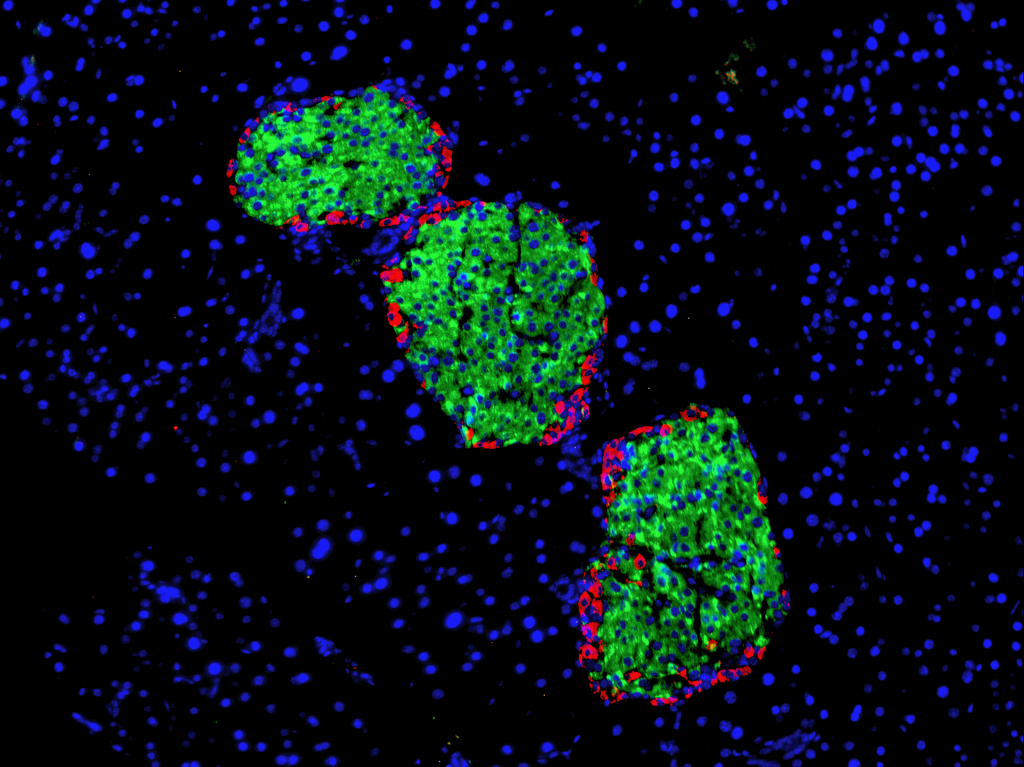Press notes 17/06/2024
Researchers discover a new mechanism to boost insulin secretion and improve diabetes treatment with new drugs
The finding, led by researchers from the DIAMET research group of the IISPV and URV, focuses on the role of succinate and its receptor, which play a key role in the alterations in metabolism suffered by these patients

The finding, led by researchers from the DIAMET research group of the IISPV and URV, focuses on the role of succinate and its receptor, which play a key role in the alterations in metabolism suffered by these patients
In Spain, 25% of the population either has diabetes or is in a previous or initial state of the disease, according to data from the Di@bet.es study, led by CIBERDEM and financed by the Institute of Health Carlos III. Type 2 diabetes is the most common form of this disease (it accounts for 90-95% of diagnosed cases). On the one hand, it is characterized by a resistance to insulin (the hormone that regulates sugar or glucose levels in the blood), and, on the other, because the beta cells of the pancreas have difficulty producing it. This causes an imbalance in our body that, if not controlled, can cause diverse and severe health problems.
To understand and treat diabetes, studying the beta cells of the pancreas is essential. When we eat, glucose levels increase, and to compensate, these cells release the hormone insulin, which facilitates the transport of sugars into metabolic tissues (muscles, liver and adipose tissue) by sending a signal to them. These sugars are stored in these tissues so our body can use them as energy reserves when necessary. In the case of people with type 2 diabetes, insulin resistance causes the body’s cells to be unable to use it properly, leaving glucose circulating in the blood and causing this decompensation.
The Diabetes and Associated Metabolic Diseases Research Group (DIAMET) has made a discovery that represents a turning point in the approach to the disease: these researchers have found a new mechanism that could help improve the secretion of insulin and that, therefore, would favor blood sugar control in people with diabetes. This mechanism involves a substance called succinate and its receptor (known as SUCNR1), which is found in the beta cells of the pancreas.
The work has been carried out in collaboration with prestigious national institutions (UB-IDIBELL and UMH-IDiBE, among others) and international institutions (Harvard University and the National Research Council of Italy, for instance).
What is succinate?
Succinate is a natural compound present in our cells that plays an important role in energy metabolism. Traditionally, it has been associated with situations of cellular stress, such as those that occur in obese patients. This discovery shows that succinate can act as a beneficial signal that helps beta cells in the pancreas to release or secrete insulin, thereby regulating blood glucose levels.
“We discovered that the level of the SUCNR1 receptor increases in conditions of high blood sugar and metabolic deterioration, such as in obesity and diabetes. When succinate binds to this receptor, a process is activated that enhances insulin secretion. This is especially important after eating, when blood sugar levels are higher and the body needs more insulin to process this sugar,” explains Dr. Joan Sabadell-Basallote, for this DIAMET study (group led by Dr. Sonia Fernàndez-Veledo and Dr. Joan Vendrell).
This discovery opens the door to new strategies to treat diabetes, focusing on this mechanism to improve insulin secretion and help keep blood sugar levels under control. This discovery represents hope for people fighting this chronic disease.
Type 2 diabetes and obesity
This type of diabetes is closely related to obesity, as excess body fat contributes to insulin resistance. As a person gains weight, their cells become less sensitive to insulin, forcing the pancreas to produce more of it to maintain normal blood sugar levels. Over time, this constant effort can deplete the beta cells, reducing their ability to produce insulin, which contributes to the onset of type 2 diabetes.
The number of people diagnosed with type 2 diabetes is increasing year after year worldwide: according to the International Diabetes Federation, around 500 million adults suffer from it and in 20 years this number is expected to exceed 700 million. This increase is attributed to factors such as the population aging, the rising obesity rates, and sedentary lifestyles.
Bibliografic reference: Sabadell-Basallote J, Astiarraga B, Castaño C, Ejarque M, Repollés-de-Dalmau M, Quesada I, Blanco J, Nuñez-Roa C, Rodríguez-Peña MM, Martínez L, De Jesus DF, Marroqui L, Bosch R, Montanya E, Sureda FX, Tura A, Mari A, Kulkarni RN, Vendrell J, Fernández-Veledo S. SUCNR1 regulates insulin secretion and glucose elevates the succinate response in people with prediabetes. J Clin Invest. 2024 May 7:e173214. doi: 10.1172/JCI173214. Epub ahead of print. PMID: 38713514.
